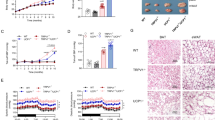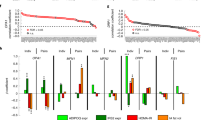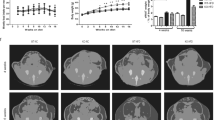Abstract
The discovery of aquaporins, which are plasma-membrane-associated water channels, has greatly influenced the medical sciences. So far, thirteen aquaporins have been identified in humans. Among them, types 3, 7, 9, and 10 are subcategorized as aquaglyceroporins, which enable the transport of glycerol as well as water. Although aquaporins have a proven crucial role in water homeostasis, the physiological and pathological importance of aquaporins as glycerol channels is not fully understood. Adipocytes are a major source of glycerol, one of the substrates for hepatic gluconeogenesis. Aquaporin subtypes 7 and 9 (AQP7 and AQP9) are the glycerol channels in adipocytes and hepatocytes, respectively. The coordinated regulation of these channels leads to the optimum balance between release of glycerol by adipocytes and its uptake by the liver. In addition, studies of AQP7 and AQP9 knockout or knockdown mice have clearly demonstrated in vivo the pathophysiological relevance of glycerol channels through effects on glycerol metabolism. Associations between various AQP7 gene mutations and obesity in humans have also been shown. Thus, further research of these two aquaporins might uncover novel targets for therapy.
Key Points
-
Aquaporins 7 and 9 act as glycerol channels in adipocytes and the liver, respectively
-
The coordinated metabolic regulation of these channels seems closely associated with glycerol and glucose metabolism
-
Impairment or lack of function of aquaporin 7 might have a causal role in obesity and diabetes mellitus
-
Peroxisome proliferator-activated receptor γ ligands might ameliorate insulin resistance partly by increasing the activity of aquaporin 7 in adipose tissue
This is a preview of subscription content, access via your institution
Access options
Subscribe to this journal
Receive 12 print issues and online access
$209.00 per year
only $17.42 per issue
Buy this article
- Purchase on Springer Link
- Instant access to full article PDF
Prices may be subject to local taxes which are calculated during checkout





Similar content being viewed by others
References
Denker BM et al. (1988) Identification, purification, and partial characterization of a novel Mr 28,000 integral membrane protein from erythrocytes and renal tubules. J Biol Chem 263: 15634–15642
King LS et al. (2004) From structure to disease: the evolving tale of aquaporin biology. Nat Rev Mol Cell Biol 5: 687–698
Agre P et al. (2002) Aquaporin water channels–from atomic structure to clinical medicine. J Physiol (London) 542: 3–16
Hub JS et al. (2008) Mechanism of selectivity in aquaporins and aquaglyceroporins. Proc Natl Acad Sci USA 105: 1198–1203
Wang Y et al. (2007) Molecular mechanisms of conduction and selectivity in aquaporin water channels. J Nutr 137 (Suppl 1): S1509–S1515
Preston GM et al. (1992) Appearance of water channels in Xenopus oocytes expressing red cell CHIP28 protein. Science 256: 385–387
Fushimi K et al. (1993) Cloning and expression of apical membrane water channel of rat kidney collecting tubule. Nature 361: 549–552
Nielsen S et al. (1993) Cellular and subcellular immunolocalization of vasopressin-regulated water channel in rat kidney. Proc Natl Acad Sci USA 90: 11663–11667
Deen PM et al. (1994) Requirement of human renal water channel aquaporin-2 for vasopressin-dependent concentration of urine. Science 264: 92–95
Ramsay TG (1996) Fat cells. Endocrinol Metab Clin North Am 25: 847–870
Kahn BB and Flier JS (2000) Obesity and insulin resistance. J Clin Invest 106: 473–481
Spiegelman BM and Flier JS (2001) Obesity and the regulation of energy balance. Cell 104: 531–543
Friedman JM (2004) Modern science versus the stigma of obesity. Nat Med 10: 563–569
Zimmet P et al. (2001) Global and societal implications of the diabetes epidemic. Nature 414: 782–787
Shepherd PR and Kahn BB (1999) Glucose transporters and insulin action-implications for insulin resistance and diabetes mellitus. N Engl J Med 341: 248–257
Mead JR et al. (2002) Lipoprotein lipase: structure, function, regulation, and role in disease. J Mol Med 80: 753–769
Stremmel W et al. (1985) Isolation and partial characterization of a fatty acid binding protein in rat liver plasma membranes. Proc Natl Acad Sci USA 82: 4–8
Ibrahimi A et al. (1996) Expression of the CD36 homolog (FAT) in fibroblast cells: effects on fatty acid transport. Proc Natl Acad Sci USA 93: 2646–2651
Motojima K et al. (1998) Expression of putative fatty acid transporter genes are regulated by peroxisome proliferator-activated receptor alpha and gamma activators in a tissue- and inducer-specific manner. J Biol Chem 273: 16710–16714
Schaffer JE and Lodish HF (1994) Expression cloning and characterization of a novel adipocyte long chain fatty acid transport protein. Cell 79: 427–436
Londos C et al. (1999) On the control of lipolysis in adipocytes. Ann NY Acad Sci 892: 155–168
Kuriyama H et al. (1997) Molecular cloning and expression of a novel human aquaporin from adipose tissue with glycerol permeability. Biochem Biophys Res Commun 241: 53–58
Ishibashi K et al. (1997) Cloning and functional expression of a new water channel abundantly expressed in the testis permeable to water, glycerol, and urea. J Biol Chem 272: 20782–20786
Hibuse T et al. (2006) Aquaporins and glycerol metabolism. Biochim Biophys Acta 1758: 1004–1011
Kishida K et al. (2000) Aquaporin adipose, a putative glycerol channel in adipocytes. J Biol Chem 275: 20896–20902
Kishida K et al. (2001) Genomic structure and insulin-mediated repression of the aquaporin adipose (AQPap), adipose-specific glycerol channel. J Biol Chem 276: 36251–36260
Kondo H et al. (2002) Human aquaporin adipose (AQPap) gene. Genomic structure, promoter analysis and functional mutation. Eur J Biochem 269: 1814–1826
Kishida K et al. (2001) Enhancement of the aquaporin adipose gene expression by a peroxisome proliferator-activated receptor γ. J Biol Chem 276: 48572–48579
Guan HP et al. (2002) A futile metabolic cycle activated in adipocytes by antidiabetic agents. Nat Med 8: 1122–1128
Evans RM et al. (2004) PPARs and the complex journey to obesity. Nat Med 10: 355–361
Murata K et al. (2000) Structural determinants of water permeation through aquaporin-1. Nature 407: 599–605
Heymann JB and Engel A (2000) Structural clues in the sequences of the aquaporins. J Mol Biol 295: 1039–1053
Ceperuelo-Mallafré V et al. (2007) Adipose tissue expression of the glycerol channel aquaporin-7 gene is altered in severe obesity but not in type 2 diabetes. J Clin Endocrinol Metab 92: 3640–3645
Prudente S et al. (2007) A functional variant of the adipocyte glycerol channel aquaporin 7 gene is associated with obesity and related metabolic abnormalities. Diabetes 56: 1468–1474
Ishibashi K et al. (1998) Cloning and functional expression of a new aquaporin (AQP9) abundantly expressed in the peripheral leukocytes permeable to water and urea, but not to glycerol. Biochem Biophys Res Commun 244: 268–274
Tsukaguchi H et al. (1998) Molecular characterization of a broad selectivity neutral solute channel. J Biol Chem 273: 24737–24743
Ko SB et al. (1999) Cloning and functional expression of rAOP9L a new member of aquaporin family from rat liver. Biochem Mol Biol Int 47: 309–318
Elkjaer M et al. (2000) Immunolocalization of AQP9 in liver, epididymis, testis, spleen, and brain. Biochem Biophys Res Commun 276: 1118–1128
Portincasa P et al. (2008) Aquaporins in the hepatobiliary tract. Which, where and what they do in health and disease. Eur J Clin Invest 38: 1–10
Kuriyama H et al. (2002) Coordinated regulation of fat-specific and liver-specific glycerol channels, aquaporin adipose and aquaporin 9. Diabetes 51: 2915–2921
Carbrey JM et al. (2003) Aquaglyceroporin AQP9: solute permeation and metabolic control of expression in liver. Proc Natl Acad Sci USA 100: 2945–2950
Catalán V et al. (2008) Influence of morbid obesity and insulin resistance on gene expression levels of AQP7 in visceral adipose tissue and AQP9 in liver. Obes Surg 18: 695–701
Maeda N et al. (2004) Adaptation to fasting by glycerol transport through aquaporin 7 in adipose tissue. Proc Natl Acad Sci USA 101: 17801–17806
Hibuse T et al. (2005) Aquaporin 7 deficiency is associated with development of obesity through activation of adipose glycerol kinase. Proc Natl Acad Sci USA 102: 10993–10998
Hara-Chikuma M et al. (2005) Progressive adipocyte hypertrophy in aquaporin-7-deficient mice: adipocyte glycerol permeability as a novel regulator of fat accumulation. J Biol Chem 280: 15493–15496
Yeh JI et al. (2004) Structures of enterococcal glycerol kinase in the absence and presence of glycerol: correlation of conformation to substrate binding and a mechanism of activation by phosphorylation. Biochemistry 43: 362–373
Matsumura K et al. (2007) Aquaporin 7 is a β-cell protein and regulator of intraislet glycerol content and glycerol kinase activity, β-cell mass, and insulin production and secretion. Mol Cell Biol 27: 6026–6037
Rojek AM et al. (2007) Defective glycerol metabolism in aquaporin 9 (AQP9) knockout mice. Proc Natl Acad Sci USA 104: 3609–3614
Akazawa S et al. (2000) Efficacy of troglitazone on body fat distribution in type 2 diabetes. Diabetes Care 23: 1067–1071
Nakamura T et al. (2001) Thiazolidinedione derivative improves fat distribution and multiple risk factors in subjects with visceral fat accumulation–double-blind placebo-controlled trial. Diabetes Res Clin Pract 54: 181–190
Hirose H et al. (2002) Effects of pioglitazone on metabolic parameters, body fat distribution, and serum adiponectin levels in Japanese male patients with type 2 diabetes. Metabolism 51: 314–317
Lefebvre AM et al. (1998) Depot-specific differences in adipose tissue gene expression in lean and obese subjects. Diabetes 47: 98–103
Björntorp P (1991) Metabolic implications of body fat distribution. Diabetes Care 14: 1132–1143
Badman MK and Flier JS (2005) The gut and energy balance: visceral allies in the obesity wars. Science 307: 1909–1914
Matsuzawa Y (2006) Therapy Insight: adipocytokines in metabolic syndrome and related cardiovascular disease. Nat Clin Pract Cardiovasc Med 3: 35–42
Frühbeck G et al. (2006) Aquaporin-7 and glycerol permeability as novel obesity drug-target pathways. Trends Pharmacol Sci 27: 345–347
Rodríguez A et al. (2006) Role of aquaporin-7 in the pathophysiological control of fat accumulation in mice. FEBS Lett 580: 4771–4776
Peroni O et al. (1996) Measuring glycerol turnover, gluconeogenesis from glycerol, and total gluconeogenesis with [2-13C] glycerol: role of the infusion-sampling mode. Metabolism 45: 897–901
Frühbeck G (2005) Obesity: aquaporin enters the picture. Nature 438: 436–437
Wintour EM and Henry BA (2006) Glycerol transport: an additional target for obesity therapy> Trends Endocrinol Metab 17: 77–78
Acknowledgements
We thank all our colleagues, especially Toshiyuki Hibuse, Ken Kishida, Hiroshi Kuriyama, and Tadashi Nakamura, for their contributions to the literature reviewed here.
Author information
Authors and Affiliations
Corresponding author
Ethics declarations
Competing interests
The authors declare no competing financial interests.
Rights and permissions
About this article
Cite this article
Maeda, N., Funahashi, T. & Shimomura, I. Metabolic impact of adipose and hepatic glycerol channels aquaporin 7 and aquaporin 9. Nat Rev Endocrinol 4, 627–634 (2008). https://doi.org/10.1038/ncpendmet0980
Received:
Accepted:
Published:
Issue Date:
DOI: https://doi.org/10.1038/ncpendmet0980
This article is cited by
-
Age and sex influence the response in lipid metabolism of dehydrated Wistar rats
Scientific Reports (2022)
-
The metabolic implications of aquaporin 7 (AQP7) promoter variants in lean children and children with obesity
Hormones (2020)
-
AQP3 is regulated by PPARγ and JNK in hepatic stellate cells carrying PNPLA3 I148M
Scientific Reports (2017)
-
Glycerol is synthesized and secreted by adipocytes to dispose of excess glucose, via glycerogenesis and increased acyl-glycerol turnover
Scientific Reports (2017)



